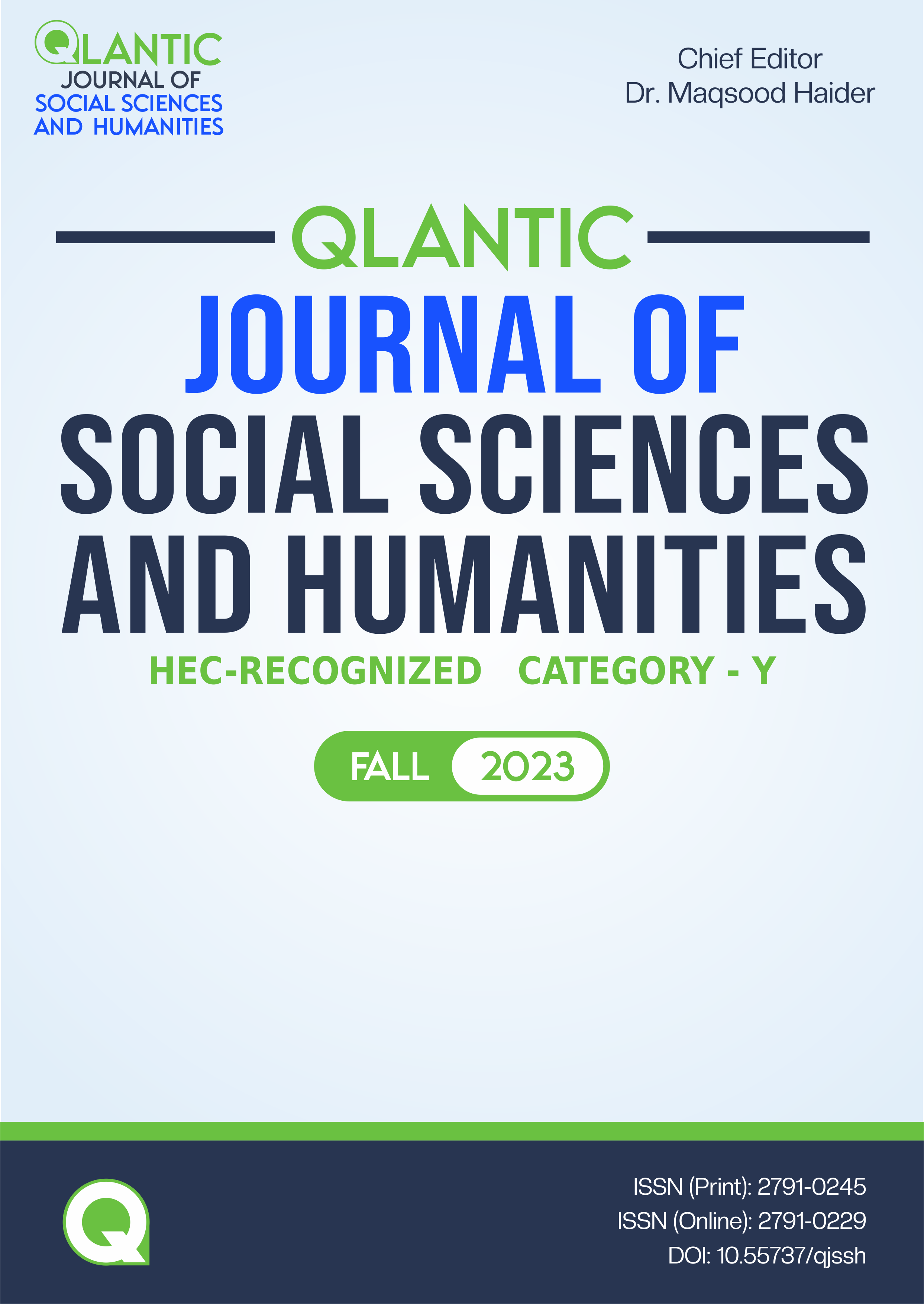Jane Austen’s Implicit Feminist Literary Narrative: Breaking the Norms
DOI:
https://doi.org/10.55737/qjssh.478919069Keywords:
Jane Austen, Feminism, Women, Regency Era, Social StructuresAbstract
This paper was conducted to apprise and depict Jane Austen’s feminist thought, highlighting the depiction of women in the contemporary Regency era and her fiction. For the study, first-hand data was acquired from the corpus of Austen’s literary narrative in the shape of dialogues and conversations among characters. For data analysis, the textual analysis tool was used. Data was analyzed under the feminist critical theory. The findings of the study show that Austen’s novels like Emma, Pride and Prejudice, and Sense and Sensibility demonstrate female characters facing multiple moral and social restrictions. Being in an open conflict with the prevalent cultural and social attitude, they struggled for autonomy and feminine identity in society. In the course of this fight with the social structures, they underwent grave tests and situations, perfecting them morally and socially. Austen’s novels echo the idea of women being the foundational feminist element of her literary narrative. She has drawn heroines who were intelligent, strong, and autonomous. All these were the features of feminist ideal women. Besides, the findings also reveal the fact that feminine consciousness is reflected in Austen's earlier novels. Through her narrative, she struggled to change the attitude of contemporary society towards the institution of marriage, female inheritance, women’s education, etc., which are prime social problems.
References
Austen, J. (1990). Mansfield park. Oxford Paperbacks. https://doi.org/10.1093/oseo/instance.00080851
Austen, J. (1811). Sense and sensibility. Ignatius Press.
Austen, J. (1813). Pride and Prejudice-Jane Austen. Leonardo Lumbreras.
Austen, J. (2010). Emma: a novel. In Sir Walter Scott on Novelists and Fiction (Routledge Revivals) (pp. 160-168). Routledge.
Brown, L. W. (1973). Jane Austen and the feminist tradition. Nineteenth-Century Fiction, 28(3), 321-338.
Craig, S. (2014). So, I ended the marriage. Persuasions, (36), 117.
DeLamotte, E. C. (1990). Perils of the night: A feminist study of nineteenth-century Gothic. Oxford University Press, USA.
Deyo, D. (2016). Jane Austen and the economic way of thinking. International Journal of Pluralism and Economics Education, 7(2), 170. https://doi.org/10.1504/ijpee.2016.078850
Emsley, S. (2005). Jane Austen’s philosophy of the virtues. Springer.
Handler, R. (1999). Jane Austen and the fiction of culture: An essay on the narration of social realities. Rowman & Littlefield.
Irvine, R. P. (2005). Jane Austen. Routledge.
Johnson, C. L. (1988). Jane Austen: women, politics, and the novel. University of Chicago Press.
Ó Gallchoir, C. (2005). Maria Edgeworth: Women, Enlightenment and Nation (pp. 1-221). University College Dublin Press.
Robinson-Pant, A. (Ed.). (2004). Women, literacy, and development (Vol. 1). Routledge.
Schug, C. (1977). The romantic form of Mary Shelley's Frankenstein. Studies in English Literature, 1500-1900, 17(4), 607. https://doi.org/10.2307/450311
Sulloway, A. G. (2016). Jane Austen and the Province of Womanhood. University of Pennsylvania Press.
Thompson, J. (1984). Jane Austen's Clothing: Things, Property, and Materialism in Her Novels. Studies in Eighteenth-Century Culture, 13(1), 217-231.
Tobin, B. F. (1990). The Moral and Political Economy of Property in Austen's Emma. Eighteenth-Century Fiction, 2(3), 229-254.
Waldron, M. (2001). Jane Austen and the Fiction of her Time. Cambridge University Press.
Wollstonecraft, M. (2016). Vindication of the Rights of Woman. In Democracy: A Reader (pp. 297-306). Columbia University Press.
Published
Issue
Section
License
Copyright (c) 2023 Muhammad Shabir, Muhammad Ismail, Muhammad Saeed, Dilshad Khan, Zarnain Imdad

This work is licensed under a Creative Commons Attribution-NonCommercial 4.0 International License.





